6 Key Insights from OpenStack Summit Vancouver
This week, I had the opportunity to attend the OpenStack Summit, hosted in the beautiful city of Vancouver, Canada. IT was an exhilarating 4-days packed with all things OpenStack: Our own Cody Hill delivered two talks (!) at the conference, and my colleagues and I enjoyed the sessions at the summit, and the opportunity to network with the community. Best of all, we had a ton of good conversations with IT folks managing large-scale OpenStack deployments across a wide range of industries — and it is always interesting to exchange ideas, best practices, and war stories about what works, and what we can do better.
During the conference, more than 150 people responded to our OpenStack Summit survey about the state and usage of cloud technologies. Let’s dig into some of the data, and its implications, below.
Who Operates and Uses OpenStack within Your Organization?
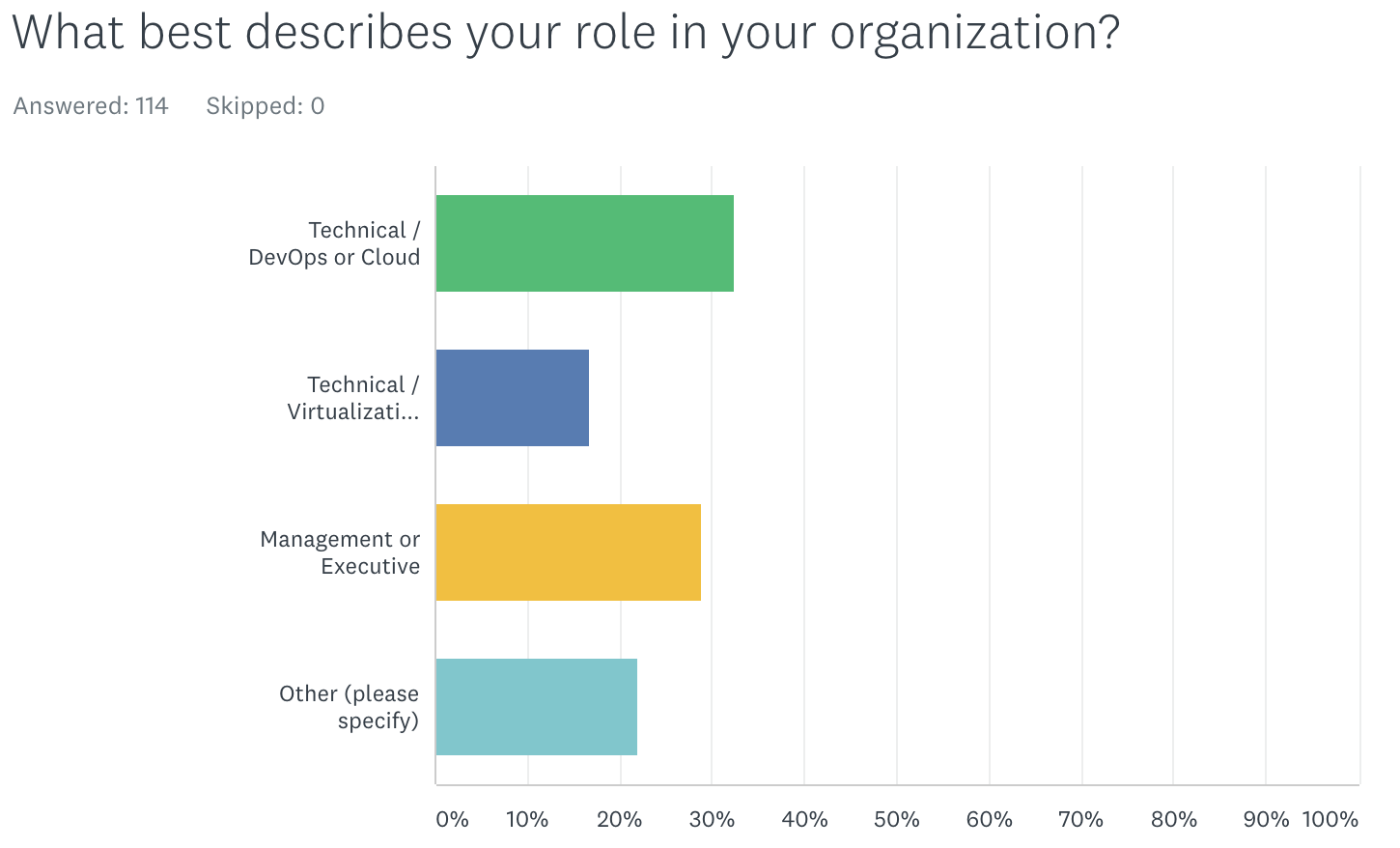
The OpenStack audience skews more towards the Operations & Infrastructure side of the house, with nearly 50% of responders identifying as DevOps or IT / Virtualization specialists. This is in keeping with the overall theme here at the Summit, as well as OpenStack’s long-standing appeal to IT practitioners.
Enterprise Cloud Environments: Public and Private Datacenters
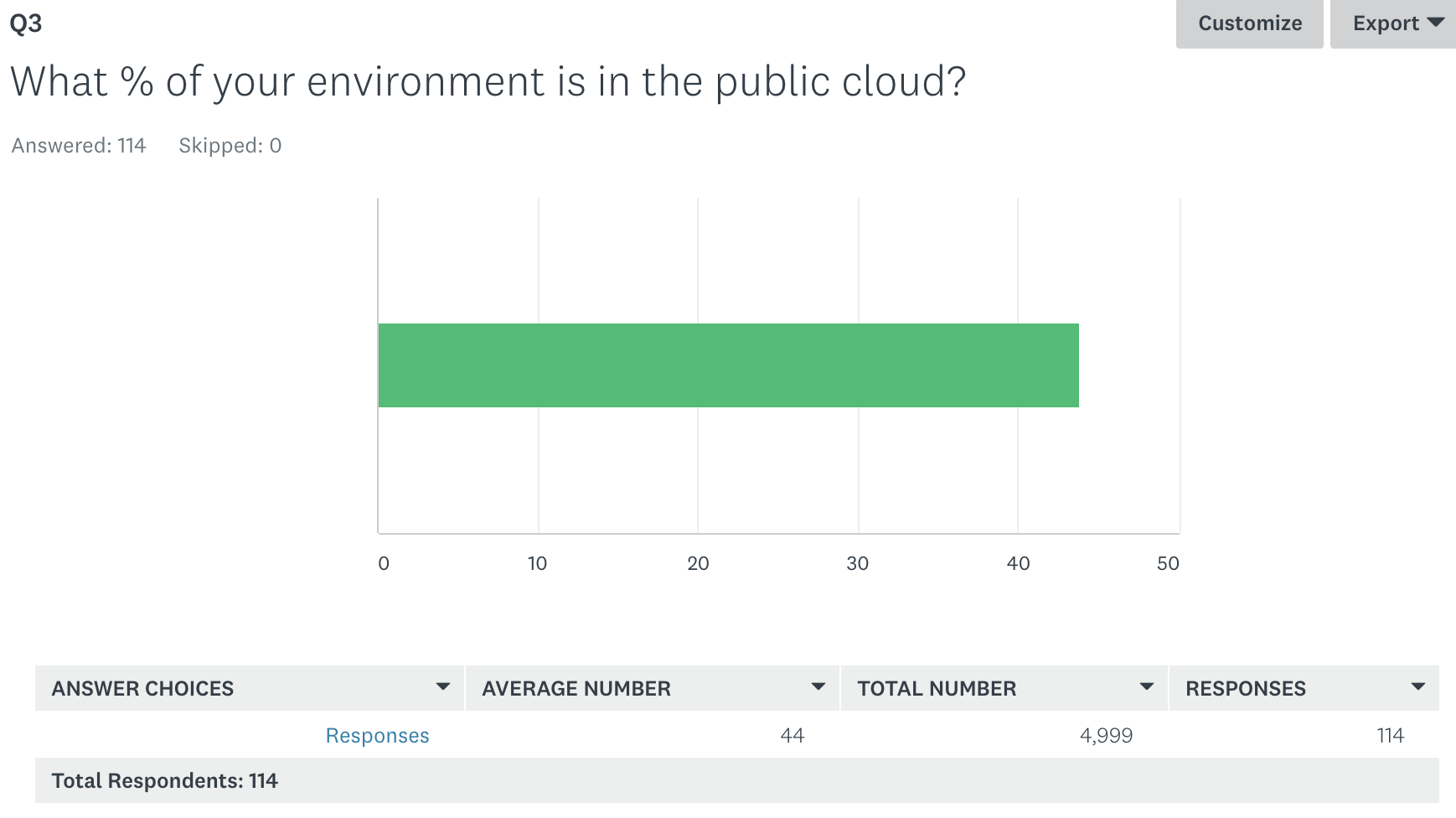
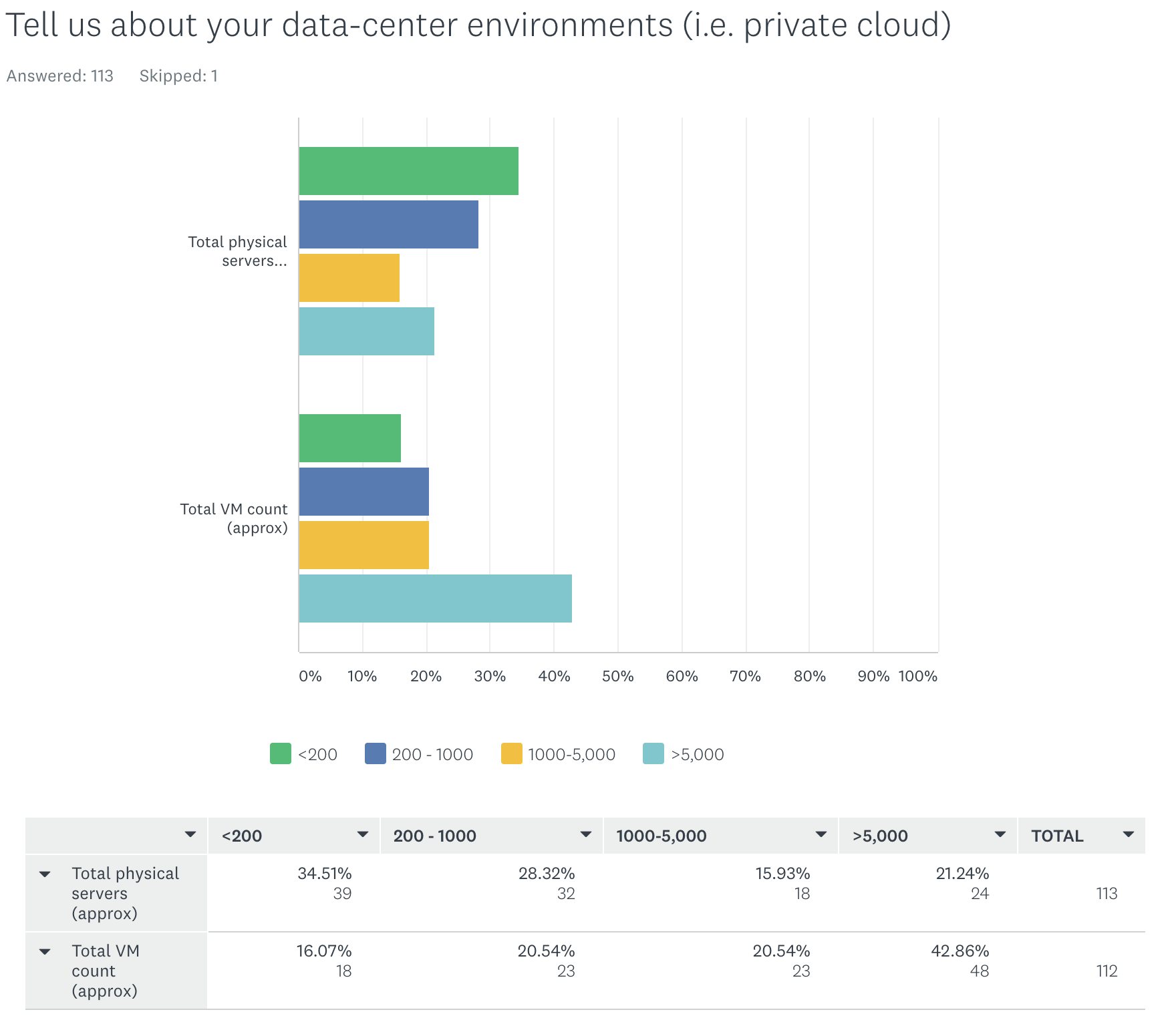
Enterprise IT operates in a state that is increasingly more and more ‘hybrid’ (and complex). We’re seeing that IT environments are comprised of both public clouds and private clouds and datacenters. While nearly half of enterprise environments are in the public cloud, on-premises datacenter investments remain high, with more than 75% of local datacenters support more than 200 servers and a fifth having 5,000+. This is a clear indicator that hybrid deployments continue to be the norm – this is not a zero-sum game.
The Evolution of Cloud Infrastructure: A Rising Tide Lifts All Boats
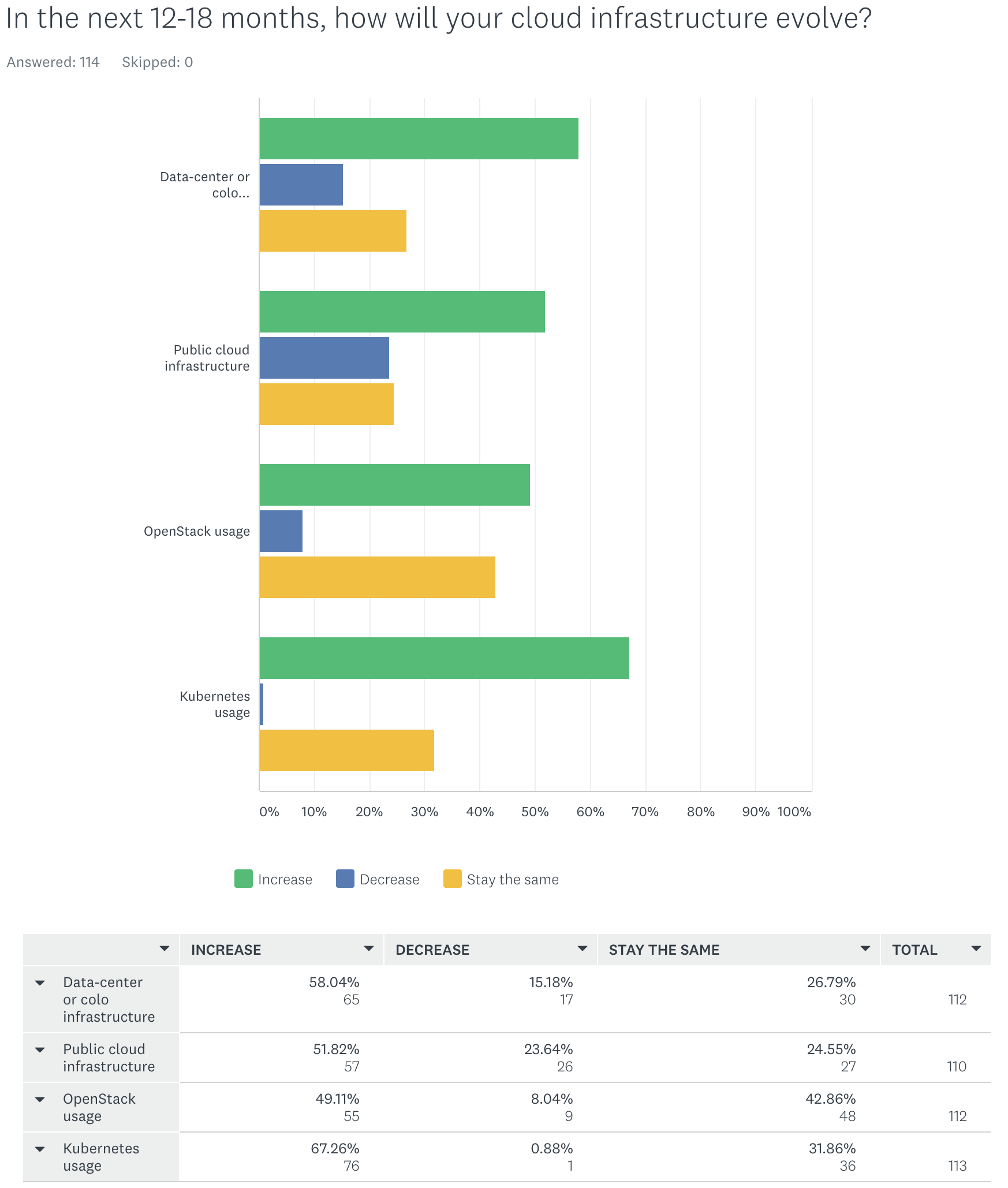
Across the board, organizations are planning to increase investment in cloud infrastructure, ranging from datacenters and OpenStack to public clouds and Kubernetes. The significant increase in Kubernetes interest (67% of respondents) likely has a knock-on effect on the other areas of investment as well, since it offers the promise of running against the same consistent development interface across any IaaS provider.
Top IT Concerns: Operational Cost and Datacenter Efficiency
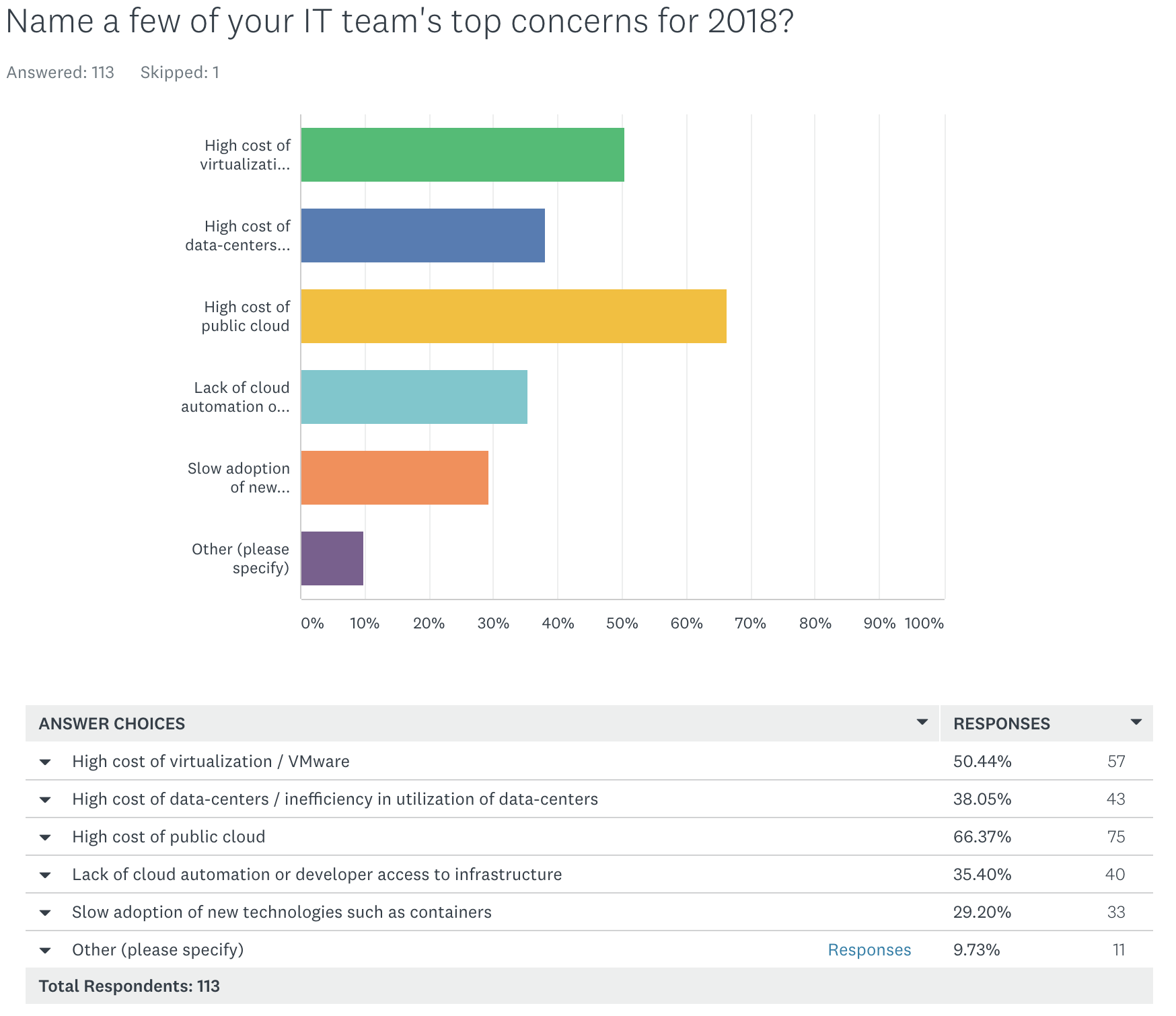
Among all this increased infrastructure investment, cost remains a key concern for enterprises, with public cloud spending (67%) now becoming an even larger concern than VMware spend (50%). Another cost driver – datacenter efficiency – was, unsurprisingly, the next major concern.
State of Cloud Technologies: OpenStack in Production, Kubernetes in Research
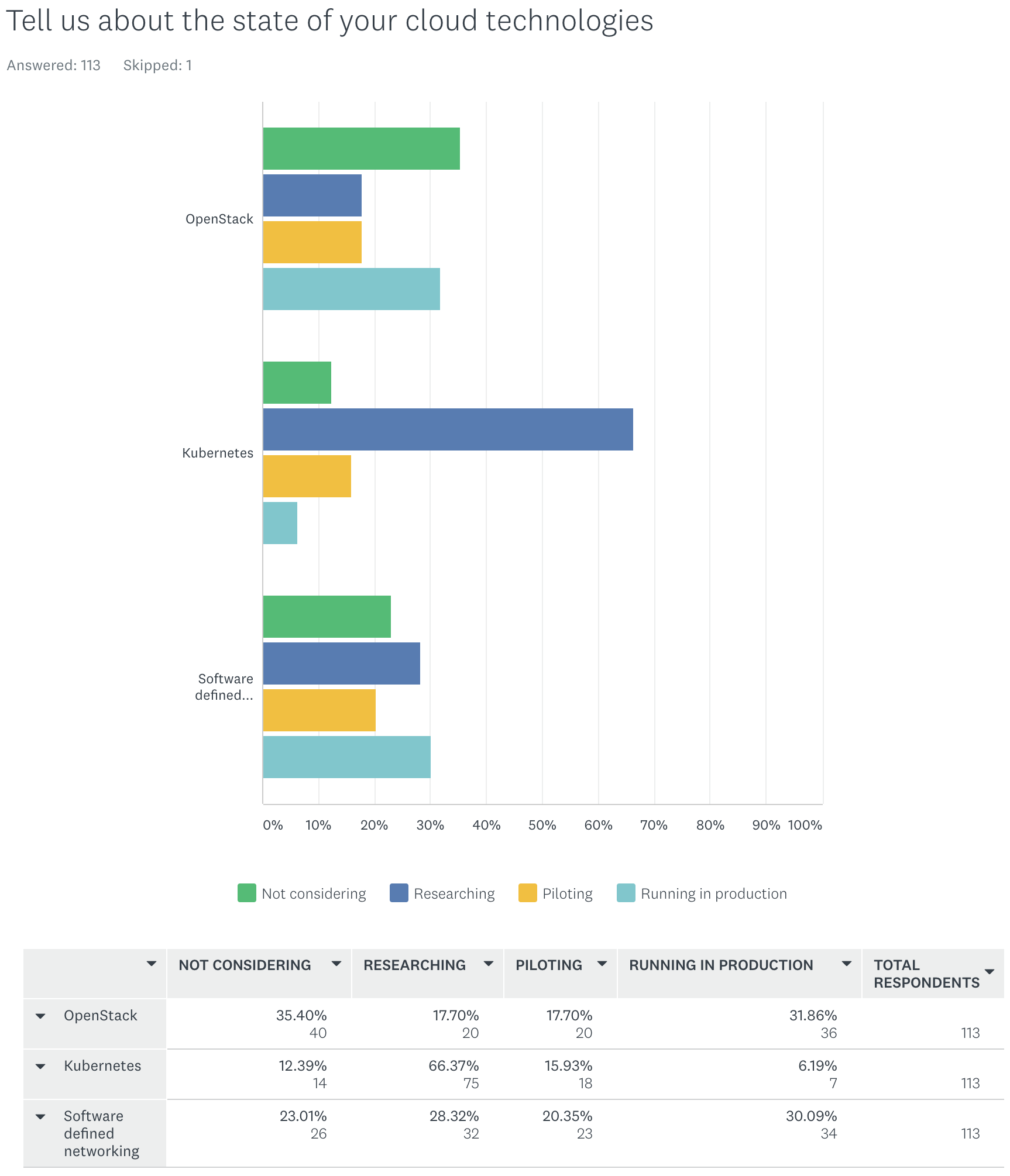
While most of the respondents already use OpenStack in Production, interest in Kubernetes seems to be high in the “Research” stage. While this could represent the bias of the audience at an OpenStack-focused conference, the data is probably an accurate reflection of where the two technologies are in their respective lifecycles: industry research does show that adoption of Containers (similar to the early adoption of Cloud technologies) starts with development/CI use cases, before maturing into Production workloads..
Top Concerns with Using OpenStack: Operational Complexity Remains an Issue
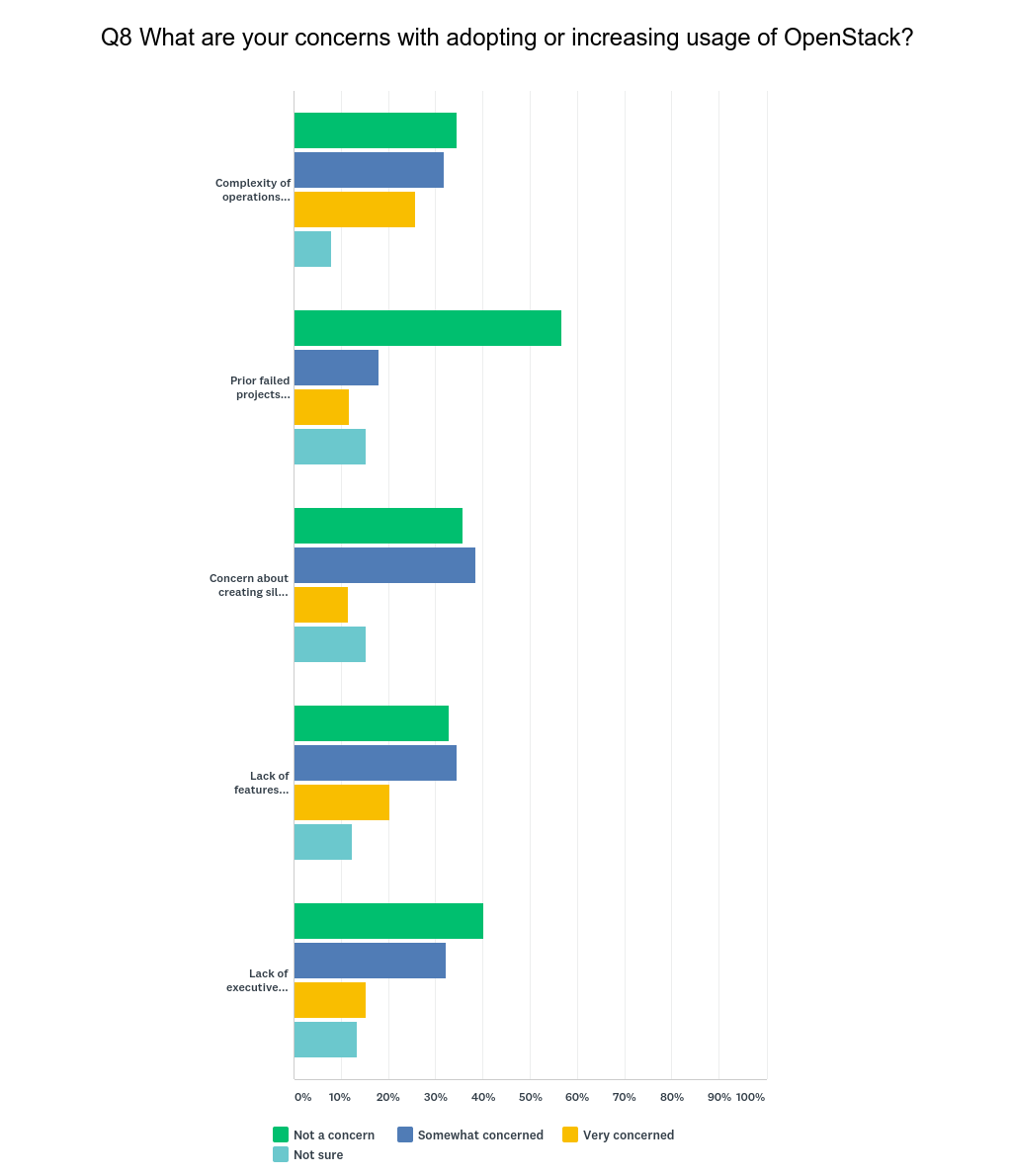
The biggest concern with using OpenStack continues to be its operational complexity, with ~58% of respondents being either somewhat concerned, or greatly concerned about it. Close second were the lack of developer-focused features like databases and additional cloud services, followed finally by with the risk of creating silos within an organization with separate VMware and public cloud efforts.
Interestingly, these are precisely the insights we used to drive our Platform9 suite of solutions that provide OpenStack – and Kubernetes – as SaaS-managed offerings, thereby greatly reducing their operational complexity. We also provide additional cloud services like fission.io, an open source Serverless framework, and finally, work consistently across all platforms – from datacenters with KVM or VMware to public clouds and containers.
In Closing
It was encouraging to see the conversation around OpenStack shifting more towards late-stage production usage issues, reflecting the investments organizations have made, and continue to make towards their private cloud efforts. This serves as an indicator for the challenges that the next promising open-source cloud technology – Kubernetes – will need to overcome as it begins its’ own march towards widespread adoption. I am excited to see both of these technologies dovetail into providing more powerful developer tooling, along with realizing datacenter efficiencies and ease of operations for application teams and IT administrators alike.
What are your thoughts on the survey responses presented here, or the Summit in general? Please leave a comment, or reach us on social media.
- Beyond Kubernetes Operations: Discover Platform9’s Always-On Assurance™ - November 29, 2023
- Platform9 Introduces Elastic Machine Pool (EMP) at KubeCon 2023 to Optimize Costs on AWS EKS - November 15, 2023
- KubeCon 2023 Through Platform9’s Lens: Key Takeaways and Innovative Demos - November 14, 2023